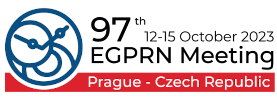Why don’t we follow clinical practice guideliness attenting people suffering from vertigo? Let’s improve it!
Eva Peguero, Alicia Rul-Lan, Josep Lluis Ballvé, Yolanda Rando, Ivan Villar, Teresa Cruz
Keywords: Benign paroxysmal positional vertigo; Epley maneuver; Dix-Hallpike maneuver; Primary Are; Qualitative Study
Background:
5% of the population suffers from dizziness, whose most common cause is benign paroxysmal positional vertigo (BPPV). The clinical practice guidelines recommend the approach of BPPV with diagnostic and therapeutic maneuvers that can be performed in a unique consultation saving time and money. But General Practitioners do not routinely perform it.
Research questions:
What are the barriers and facilitators in adherence to clinical practice guidelines in the management of BPPV?
Method:
Qualitative study through focus groups.
Study population: Family physicians. Intentional and reasoned sampling.
90-minute sessions, based on a previously prepared question script, until information saturation. The sessions are transcribed and a thematic content analysis is performed by three independent researchers.
Results:
Main barriers detected: lack of time, bad initial experiences, fear of harming the patient, especially in older people, difficulties in visualizing the nystagmus, and overcoming the inertia of the patient's expectations, who expects a pill instead of physical maneuvers.
Facilitators: proper training with periodic reminders and the development of technological aids that could offer tutorials, accessible videos and software that helps in the interpretation of nystagmus.
Conclusions:
GP’s in Spain ask for time, periodically training, accessible applications and software that helps interpret nystagmus.
Our research group made a training course, and is working on accessible applications and on a medical device to help interpret nystagmus.
Points for discussion:
To share our study to know if the barriers are the same.
To improve and share our training, our work on an application and a medical device.
#82

